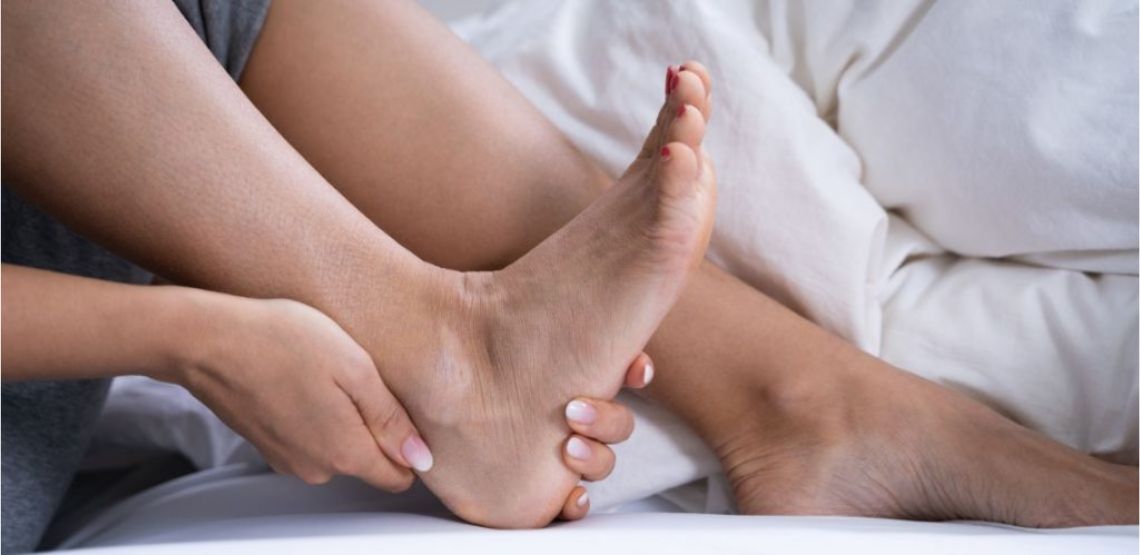What is Plantar Fasciitis?
Plantar fasciitis is a painful condition of the feet wherein the tissue that connects the heel bone to the toes (plantar fascia) is affected. Plantar fasciitis was initially thought to be due to inflammation of the plantar fascia, however, studies show that it is more of a degeneration of the fascia that leads to the symptoms. This eventually leads to heel pain, and in severe cases can be very disabling for some people.
Plantar fasciitis is a common cause of problems in the foot or ankle. It is the most common cause of long-term heel pain in adults, wherein one in 10 adults will have the condition. It usually develops among middle-aged overweight women and young athletic men. Because of this it is also known as “runner’s heel” or “painful heel syndrome.”
This condition can severely affect mobility and has a significant impact on a patient’s quality of life. But how do you know if you have it? Let’s look at the causes and symptoms of plantar fasciitis.
What Causes Plantar Fasciitis?
The cause of plantar fasciitis is still unknown, but studies show that there is degeneration of tissue leading to thickened connective tissue. Even if the exact cause is unknown, there are many known factors that increase the risk of plantar fasciitis.
Obesity is found to have an association with the occurrence of plantar fasciitis. Heel spurs and bony protuberance due to calcium deposits on the underside of the heel bone are also associated with an increased risk of plantar fasciitis.
Posture and foot placement during walking is also thought to have associations with plantar fasciitis but more studies still need to be done to confirm this.
What Does Plantar Fasciitis Feel Like?
The following list outlines the most common symptoms of plantar fasciitis.
1. Pain in the Heel of Your Foot
Heel pain when walking is the most common complaint for patients with plantar fasciitis. The pain is felt during the first steps after a period of rest. These first few steps are when the pain is the worst and decreases as the foot becomes more mobile.
Pain decreases and at times is absent with activity; for example: weight-bearing activities such as climbing, jogging, prolonged walking or dancing. However, the pain would gradually increase again at the end of the day.
The heel pain may eventually spread to the whole foot, being emphasized when a person tiptoes.
2. Pain in Other Areas of the Foot
Pain from plantar fasciitis may also be experienced in other areas of the foot such as the arch of the foot. This is because the plantar fascia runs through these areas. The pain is like the pain experienced in the heel.
There is also more pain felt after exercise or activity. Some people confuse plantar fasciitis with Achilles tendonitis because these both can cause heel pain. However, in Achilles tendonitis pain is worse during activity, while in plantar fasciitis, pain is worse after activity.
3. Swelling
Because there is inflammation in the plantar fascia, some patients can experience swelling of the bottom of the foot. However, if the entire foot or even the ankle is swollen, it may not be due to plantar fasciitis.
4. Decreased Range of Motion or Mobility
Because of the pain experienced, patients with plantar fasciitis may experience limitations in ankle mobility. This is because some muscles are connected to the plantar fascia as well. In some patients, there is limited ankle movement, especially during backward bending (dorsiflexion).
In severe cases, some patients may have trouble walking.
Treatment Options for Plantar Fasciitis
Plantar fasciitis is a self-limiting disease. It can go away on its own, but it can take some time. Some patients deal with the condition for more than a year before noticing any improvement.
There are some things that can be done to relieve symptoms of plantar fasciitis. If a person with plantar fasciitis is experiencing pain, it can be helpful to rest for a while. Home remedies such as heat or ice packs can also provide relief.
Heel pads can make walking more comfortable. Night splints can help improve the foot’s position, especially during sleeping. Stretching the calf a few times a day has also been found to be helpful.
If there is still pain, non-steroidal anti-inflammatory medications can help. If these remedies do not make the condition better, you can go to your nearest doctor for other options.
Other possible treatments include steroid injections, shock wave therapy, plasma injections, or surgery.
Final Notes
If you feel you are at risk for plantar fasciitis it is important to consult your physician and not to self-treat yourself. It is best to seek the evaluation of a physician if symptoms don’t improve.
Consult a doctor today if you feel like you or someone you know might have plantar fasciitis.

